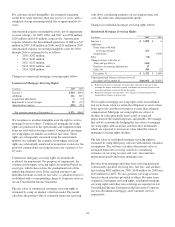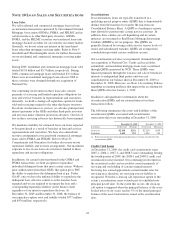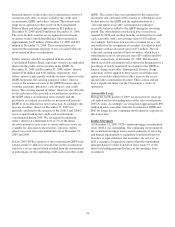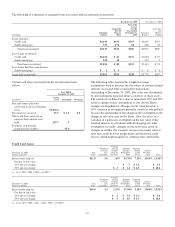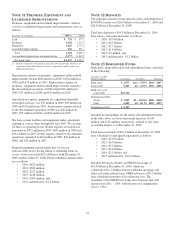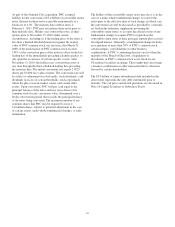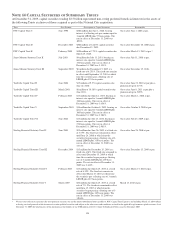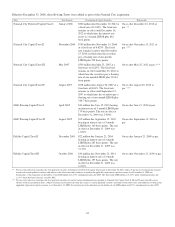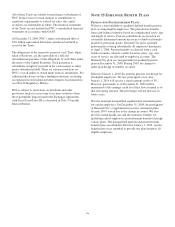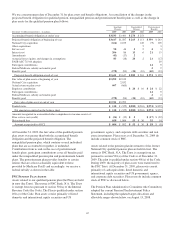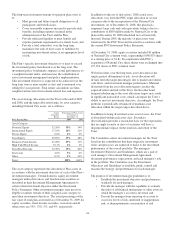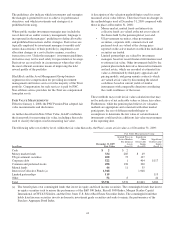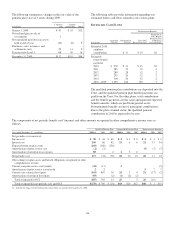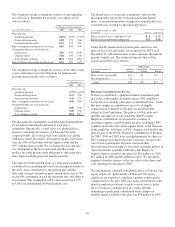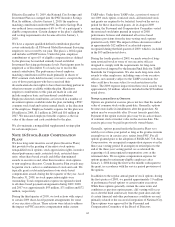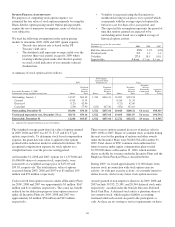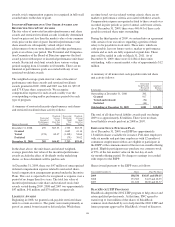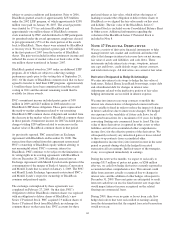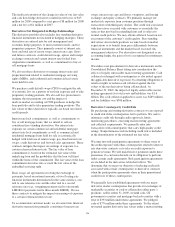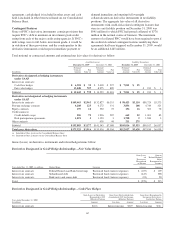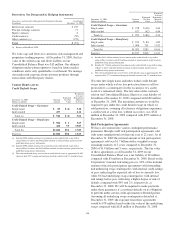PNC Bank 2009 Annual Report Download - page 142
Download and view the complete annual report
Please find page 142 of the 2009 PNC Bank annual report below. You can navigate through the pages in the report by either clicking on the pages listed below, or by using the keyword search tool below to find specific information within the annual report.
The long-term investment strategy for pension plan assets is
to:
• Meet present and future benefit obligations to all
participants and beneficiaries,
• Cover reasonable expenses incurred to provide such
benefits, including expenses incurred in the
administration of the Trust and the Plan,
• Provide sufficient liquidity to meet benefit and
expense payment requirements on a timely basis, and
• Provide a total return that, over the long term,
maximizes the ratio of trust assets to liabilities by
maximizing investment return, at an appropriate level
of risk.
The Plan’s specific investment objective is to meet or exceed
the investment policy benchmark over the long term. The
investment policy benchmark compares actual performance to
a weighted market index, and measures the contribution of
active investment management and policy implementation.
This investment objective is expected to be achieved over the
long term (one or more market cycles) and is measured over
rolling five-year periods. Total return calculations are time-
weighted and are net of investment-related fees and expenses.
The asset strategy allocations for the Trust at the end of 2009
and 2008, and the target allocation range, by asset category,
including National City assets, are as follows:
Target
Allocation
Range
Percentage of Plan Assets
by Strategy at
December 31
PNC Pension Plan 2009 2008
Asset Category
Domestic Equity 32-38% 39% 34%
International Equity 17-23% 18% 12%
Private Equity 0-8% 2% 2%
Total Equity 49-69% 59% 48%
Domestic Fixed Income 23-28% 29% 17%
High Yield Fixed Income 9-11% 6% 3%
Total Fixed Income 32-39% 35% 20%
Real estate 4-6% 5% 2%
Other 0-5% 1% 30%
Total 100% 100%
The asset category represents the allocation of Plan assets in
accordance with the investment objective of each of the Plan’s
investment managers. Certain domestic equity investment
managers utilize derivatives and fixed income securities as
described in their Investment Management Agreements to
achieve their investment objective under the Investment
Policy Statement. Other investment managers may invest in
eligible securities outside of their assigned asset category to
meet their investment objectives. The actual percentage of the
fair value of total plan assets held as of December 31, 2009 for
equity securities, fixed income securities, real estate and all
other assets are 53%, 33%, 5%, and 9%, respectively.
In addition to the use of derivatives, 2008 actual asset
allocations vary from the PNC target allocation in several
categories due to the incorporation of the National City
investments. As of December 31, 2008, this plan had a
temporary large cash and cash equivalents balance due to a
contribution of $850 million made by National City to the
plan on December 30, 2008 which had not yet been fully
invested. During 2009, the majority of plan assets were
transferred to the PNC Trust and invested in accordance with
the current PNC Investment Policy Statement.
At December 31, 2008, equity securities included $9 million
of National City common stock, representing 5,048,833 shares
at a closing price of $1.81. In conjunction with PNC’s
acquisition of National City, these shares were exchanged into
197,914 shares of PNC common stock.
We believe that, over the long term, asset allocation is the
single greatest determinant of risk. Asset allocation will
deviate from the target percentages due to market movement,
cash flows, and investment manager performance. Material
deviations from the asset allocation targets can alter the
expected return and risk of the Trust. On the other hand,
frequent rebalancing to the asset allocation targets may result
in significant transaction costs, which can impair the Trust’s
ability to meet its investment objective. Accordingly, the Trust
portfolio is periodically rebalanced to maintain asset
allocation within the target ranges described above.
In addition to being diversified across asset classes, the Trust
is diversified within each asset class. Secondary
diversification provides a reasonable basis for the expectation
that no single security or class of securities will have a
disproportionate impact on the total risk and return of the
Trust.
The Committee selects investment managers for the Trust
based on the contributions that their respective investment
styles and processes are expected to make to the investment
performance of the overall portfolio. The managers’
Investment Objectives and Guidelines, which are a part of
each manager’s Investment Management Agreement,
document performance expectations and each manager’s role
in the portfolio. The Committee uses the Investment
Objectives and Guidelines to establish, guide, control and
measure the strategy and performance for each manager.
The purpose of investment manager guidelines is to:
• Establish the investment objective and performance
standards for each manager,
• Provide the manager with the capability to evaluate
the risks of all financial instruments or other assets in
which the manager’s account is invested, and
• Prevent the manager from exposing its account to
excessive levels of risk, undesired or inappropriate
risk, or disproportionate concentration of risk.
138


